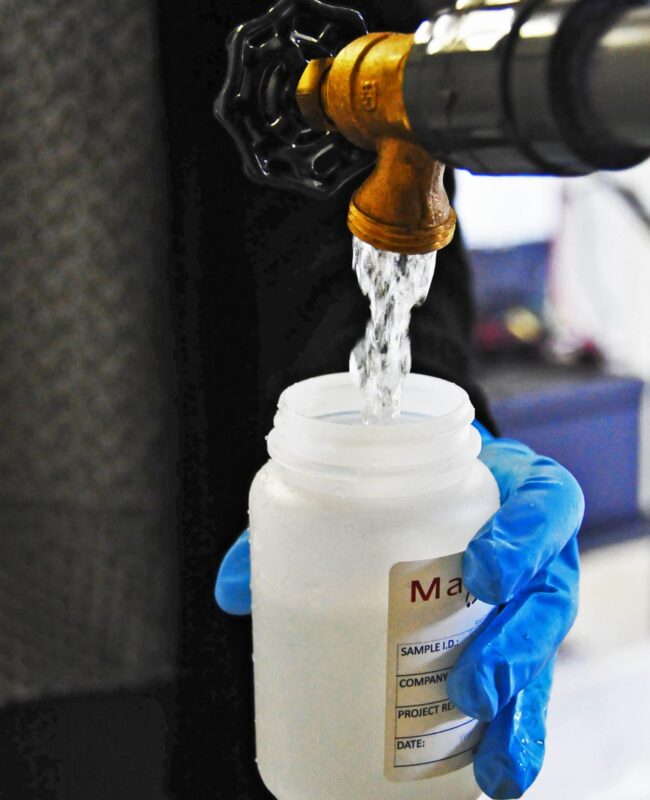See This Report on Water Treatment For Well Water
Table of ContentsThe Water Treatment For Well Water PDFsThe Single Strategy To Use For Water Treatment For Well WaterThe Single Strategy To Use For Water Treatment For Well WaterThe Of Water Treatment For Well Water
In this blog, we will certainly cover the 4 kinds of water treatment plants, just how they function and also the numerous industrial applications of each kind. Let's obtain started! Kinds Of Water Therapy Plants 1. Wastewater Treatment Plant (WWTP) Wastewater is the water that originates from water utilized in domestic, agricultural, commercial along with clinical or transport activities.on the various other hand, comes from manufacturing, industrial and also business tasks lugged and has a completely different composition than sewage water. How does it work? The initial action in this water therapy plant is that the wastewater drains to the plant with the help of gravity through the major sewer system.
In this stage, the water moves via the gravel chamber to eliminate any grit. The water after that relocates to the bar screens which get rid of big objects.
In this phase, the water flows to the key settling storage tanks, likewise known as pre-settling containers. These tanks have receptacles which are positioned in the base of the tank where water streams with.
Water Treatment For Well Water Things To Know Before You Buy
These clearing up tanks enable the sludge to settle and afterwards transfers to digestion storage tanks. In the food digestion storage tanks, the sludge is heated and also mixed. An additional vital point that takes place below is the manufacturing of biogas, which the wastewater therapy plants can recycle, in the production of electric or thermal power which is another big advantage to the setting.
This makes it possible for the splitting up of water from the semi-solid sludge, whereas the continuing to be sludge undertakes the mechanical process once more for dewatering, that is taking out as much water from the sludge as possible. The sludge then left after the food digestion and dewatering process is complete, is ultimately disposed of in the dump.

The last action in wastewater therapy is examination. This inspection entails inspecting the contamination degree of the water treated and also seeing to it it adheres to the highest possible criteria in order to be released or reused for residential or commercial functions. Applications: Most oil refineries or petrochemical along with chemical markets generate a big amount of wastewater and also need on-site wastewater therapy plants.
The wastewater here moves via displays and right into negotiation basins that can take out particles in huge quantities. It functions as a pre-treatment as stated above as it takes location before 3 even more aggressive stages- main, additional as well as tertiary treatment. Primary Therapy Throughout this phase, the wastewater moves into the clarifiers.
The smart Trick of Water Treatment For Well Water That Nobody is Discussing
It is the design of these tanks that cause resolving, that is, the natural solid matter gathers at the bottom of the storage tank while the lighter issue drifts to the top coming to be easier for elimination. The natural issue that settles at the base is known as a primary sludge blanket.

This RAS returns right into the primary explanation container as well as the bacteria in it assists in damaging down any kind of raw material in the sewage. Once RAS has actually entirely experienced both the main and also second clarification basins continuously, i. e several times, it is turned into waste-activated sludge (WAS) (water treatment for well water). The WAS then does not check my source go back to the main clarification container yet rather relocates to the protected storage tanks, also known as cardio sludge digesters.
The staying sludge moves to the dewatering facility that has dewatering tanks where the plant makes use of belt presses to squeeze any staying water out of the sludge. Tertiary Treatment Tertiary treatment complies with the process of both key and additional processes yet also furthermore entails mechanical and photochemical processes.
The 25-Second Trick For Water Treatment For Well Water
The purpose of this is to remove as much strong physical issues as feasible prior to sending out the effluent for further therapy. Here chemicals are added to damage down any kind of strong as well as chemical waste.
There are two kinds of resins- one is an anion one while the various other is a cation one. These former materials launch hydroxyl ions which are negatively billed while the cation materials launch hydrogen ions that are favorably billed. The cation-exchange resins bring about softening of water, the anion-exchange cause the removal of nitrate from wastewater and the mix of both the anion and also cation exchange removes essentially every ionic impurity existing in the feed water with a process called deionization.
Applications: Demineralization results in the total elimination of minerals from the water and is typically utilized in markets that need water with high levels of pureness, for instance- make-up or feed water in high-pressure boilers, the food and also drink market, and also process streams used in the production of electronic devices. They are also used in markets for the generation of vapor, power and air conditioning (water treatment for well water).
